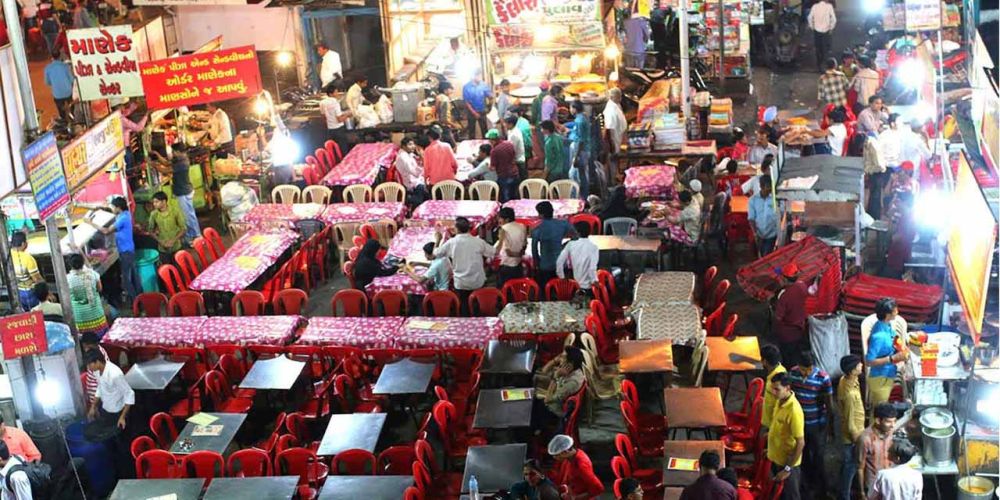

Located in the heart of Ahmedabad, Manek Chowk is a bustling open square that has served as a focal point for city life for centuries. Named after Saint Maneknath, who is believed to have intervened in a dispute between Sultan Ahmed Shah I, the founder of the city, and his subjects, this square has played a pivotal role in the history of Ahmedabad.
The history of tourism in Manek Chowk is intertwined with that of Ahmedabad itself. As the city grew into a prominent center of trade and culture, Manek Chowk became a must-visit location for traders and travelers. The area around the square is surrounded by historical structures such as the Rani no Hajiro (Queens' Tomb), the Badshah no Hajiro (Kings' Tomb), and the famous Jama Masjid, which are significant draws for tourists interested in the architectural and cultural heritage of India.
Manek Chowk's attraction is not limited to its historical structures; it is also known for its vibrant market. By day, it operates as a traditional marketplace where visitors can find everything from jewelry to textiles to utensils. As night falls, the chowk transforms into a bustling street food market, offering a variety of local Gujarati delights and attracting food enthusiasts from around the world.
The evolution of tourism in Manek Chowk reflects the changing interests and lifestyles of travelers. While the historical and cultural aspects continue to be mainstays, there has been a growing interest in culinary tourism and experiential activities. This shift has seen Manek Chowk become one of the centers for food walks and cultural tours in Ahmedabad.
Moreover, the government's effort to promote heritage walks through the pre-Mughal, Mughal, and Colonial parts of Ahmedabad city, of which Manek Chowk is an integral part, has enhanced its visibility on the tourism map. The designation of Ahmedabad as a UNESCO World Heritage City in 2017 has further bolstered tourism influx, with Manek Chowk being one of the highlights for heritage tourists.
In recent years, a surge in digital and social media influence has led to an increase in themed and photogenic spots within Manek Chowk that cater to the interests of the Instagram-savvy generation. Tourists are not only interested in the historical and gastronomical experiences but also in capturing and sharing their moments in the evocative backgrounds of Manek Chowk.
Another trend involves the inclusion of Manek Chowk in night tours that showcase the vibrant nightlife of Ahmedabad. The food market, in particular, has become popular among travelers seeking authentic Gujarati cuisine in a lively setting.
In addition to these trends, sustainable and responsible tourism practices are gaining attention. Tourists today are more conscious about preserving the cultural and historical integrity of places like Manek Chowk and are actively participating in initiatives that support local communities and minimize environmental impact.
Manek Chowk continues to be a significant tourist destination in Ahmedabad, offering a unique blend of history, culture, and cuisine. As tourism evolves, Manek Chowk adapts, ensuring that it remains a must-visit destination for domestic and international travelers alike, providing a truly immersive experience into the cultural fabric of Gujarat.